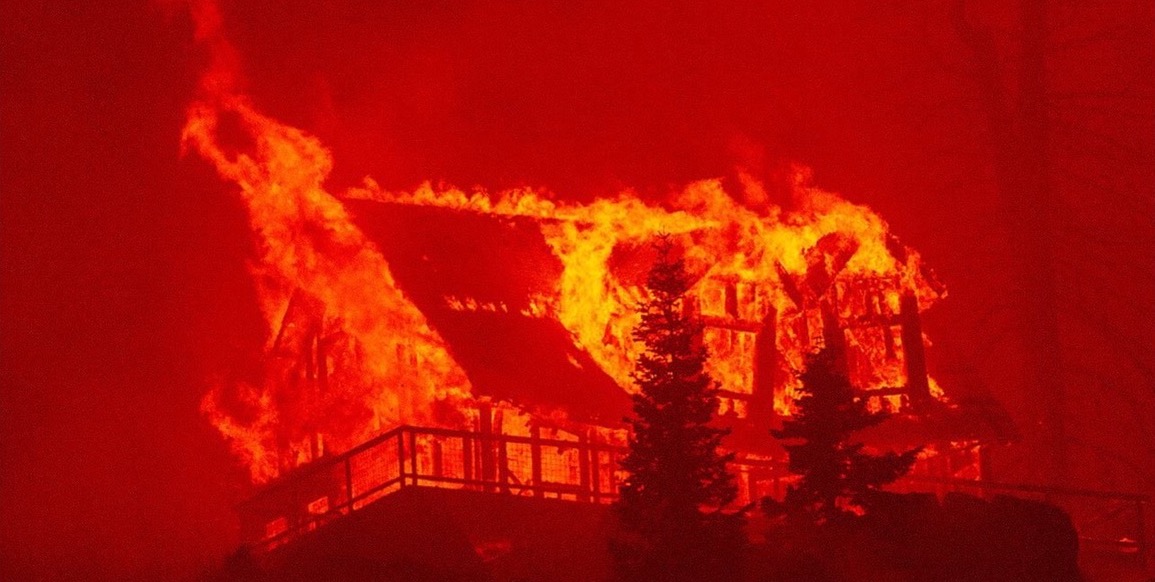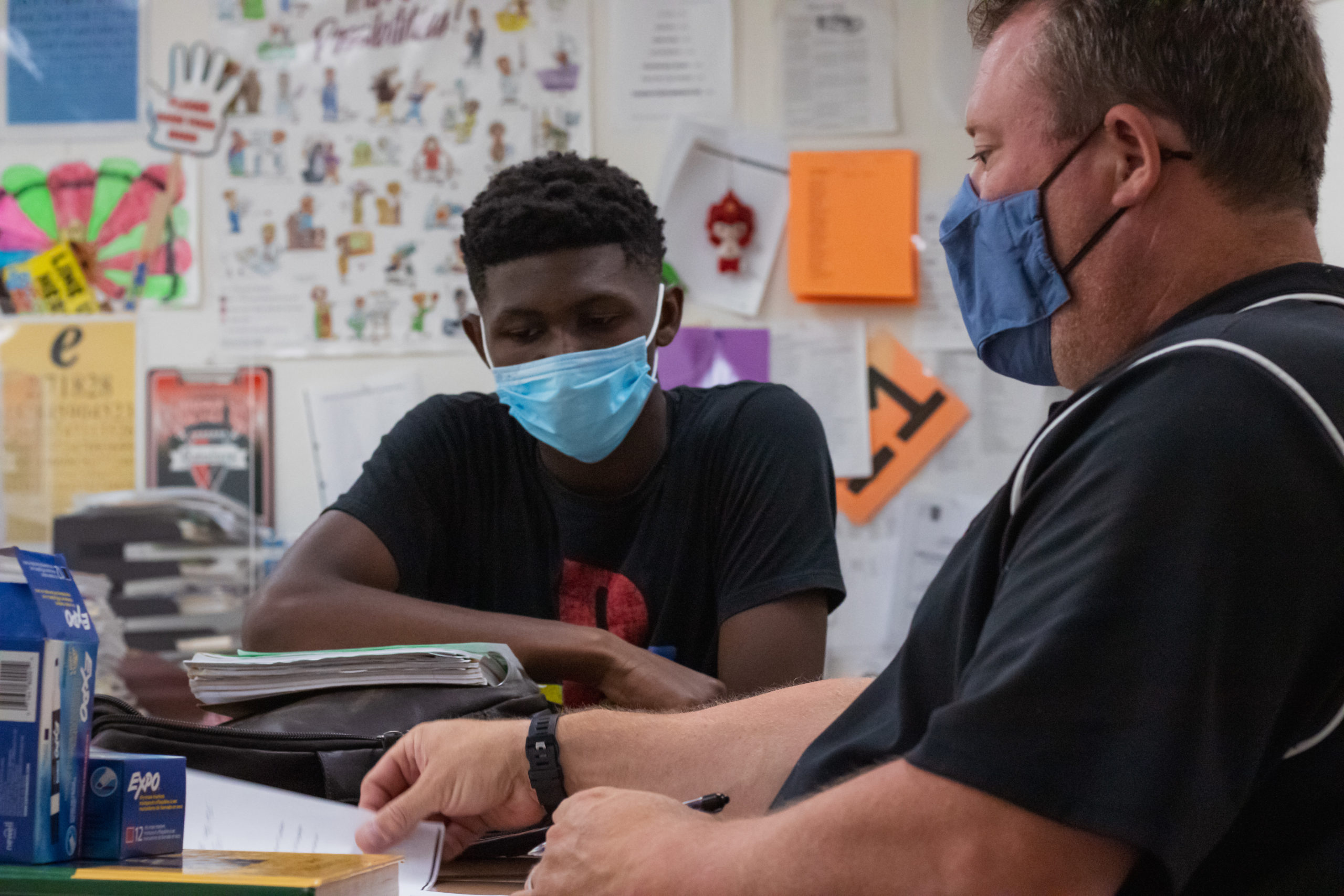Jason Tokheim, a South Lake Tahoe resident, was standing in his driveway, clumps of ash flowing around him, as he took one last look at his home, unsure if it would be his last.
“It felt like a scene from a movie,” Tokheim said. “It was surreal to be standing in this dark, dark cloud with ash falling over us.”
Although he and his wife Kristen never actually saw the flames of the Caldor Fire when they voluntarily left their home on Aug. 29, Tokheim remembers driving away from his house, head-on into a dark, ominous sky, broken up by “eerie orange glows.”

The 2021 California wildfire season is shaping up to be one of the worst in California history. So far, 2021 is nearly on par with 2020. An unprecedented wildfire season that accounted for four of the five largest fires in California history in terms of both the number of fires and number of acres burned, according to the California Department of Forestry and Fire Protection, which goes by Cal Fire.
Between the beginning of the year and Sept. 7, 7,171 fires burned 2.03 million acres; during that same period last year, 7,856 fires burned 2.1 million acres.
Although 2021 is a close second to 2020’s wildfire season, 2021’s Dixie Fire stole the crown for the largest single fire in California history, with over 960,000 acres burned, almost 500,000 more acres than the second closest, the Mendocino Complex which contained two separate fires, according to Cal Fire.
More than 15,500 firefighters are battling to keep the fires at bay; temperatures reaching over 100 degrees, a surplus of fuel such as vegetation, high winds and a lack of water have combined to fuel the fires.
With two of the largest fires in California history, the Caldor and Dixie fires, still burning, and 12 other major wildfires burning statewide, more than 53,000 people have been forced to evacuate, according to the state’s Office of Emergency Services.
Gov. Gavin Newsom has placed many counties in a state of emergency due to the wildfires, the most recent being El Dorado County on Aug. 17 due to the Caldor Fire.
As it did last year, the state has secured Fire Management Assistance Grants from the Federal Emergency Management Agency “to help ensure the availability of vital resources to suppress the rapidly spreading fire,” according to the governor’s website.
Unlike last year, however, Newsom elected not to put all of California in a state of emergency, and instead submitted a formal request to President Joe Biden for aid in the form of a Presidential Major Disaster Declaration.
Such a declaration provides help through programs such as housing assistance, medical services and legal services. It’s also designed to help state, tribal and local governments with emergency response, recovery costs and hazard mitigation in preparation for future disasters, according to the governor’s website.
The declaration was submitted on Aug. 23 and approved a day later, but was specific to the Dixie and River fires. Newsom submitted another request to Biden on Sept. 1 for a Presidential Emergency Declaration for Direct Federal Assistance specifically for the Caldor Fire. The White House approved the request within hours of it being submitted.
Newsom also signed Executive Order N-13-21, designed to support impacted communities and bolster response and recovery efforts.
These response and recovery efforts are headed by firefighters such as Dave Grewal, a fire captain from Riverside, California, who has been fighting the Caldor Fire.
“As a captain, I’m in charge of 30 people,” Grewal said. “Each day I have to take in 30 people and come out with 30 people. It’s a daunting task.”
While out on the front line, Grewal could only think of one analogy: “It’s man against beast,” he said.
Although it’s not easy work, Grewal’s driving factor is his desire to help the public. This sense of duty is much appreciated by Tokheim.
Firefighters “have done a tremendous job of spending their time preparing people’s homes, cleaning leaves and pine needles off the ground and clearing defensible spaces, even though it’s not their job to do so,” Tokheim said. “They have put their time, effort and safety on the line.”

The work the firefighters put in might not be easy, but it also isn’t cheap. Grewal estimates that with all the equipment and supplies, over $25 million is spent daily in combating the fires.
“There are hundreds of bulldozers, helicopters, tankers and other pieces of equipment that all cost thousands of dollars a day to run,” Grewal said.
This money and equipment hasn’t gone to waste. As of Sept. 13, the Caldor Fire is 67% contained.
Although Tokheim is appreciative of the work the firefighters have put in, he is nervous about what he’ll find when he returns home.
“I know our house is still standing, but the effect on the Lake Tahoe Basin will be huge,” Tokheim said.
Tokheim predicts that one of the biggest effects will be an emotional toll on the residents and tourists who come to Lake Tahoe to enjoy the views and the mountains. Another big effect will be on the housing economy, he said, because people are now “more aware and fearful of the fire risk presented to homes,” he said.
Firefighters know the area will not be the same.
Although they were able to get ahead of the fires and contain many of them, “Tahoe will see the burn scars for years to come,”Grewal said.
The problem with fully containing the fire was not the fire itself, but rather the terrain.
“Fire travels 50 times faster uphill than on flat ground,” Grewal said.
“In Lake Tahoe, the terrain is very steep and inaccessible, which stopped us from bringing in lots of equipment. This, the low fire history in the area, low humidity and bad weather make for very tough conditions to fight the fire.”
Global warming also has played a big role in this fire season because it has led to a higher intensity of fires, Grewal said. High fire intensity changes soil composition and kills more trees, which in turn affects wildlife.
“I saw bears running through the city going through trash cans because there is nothing to eat,” Grewal said. “It’ll take Tahoe years to recover.”
—By Arjin Claire
Originally published in the Sept 21 edition of the Octagon.



